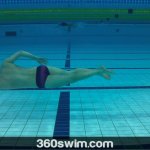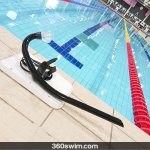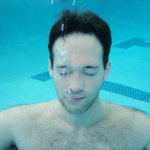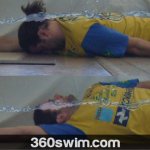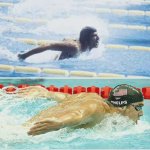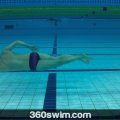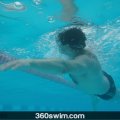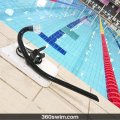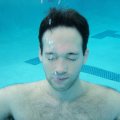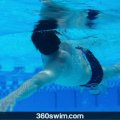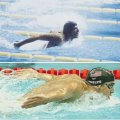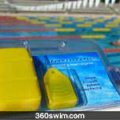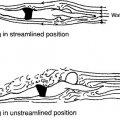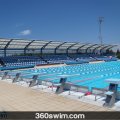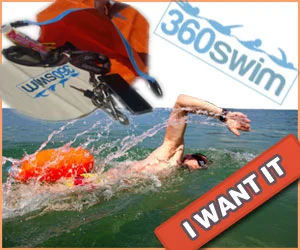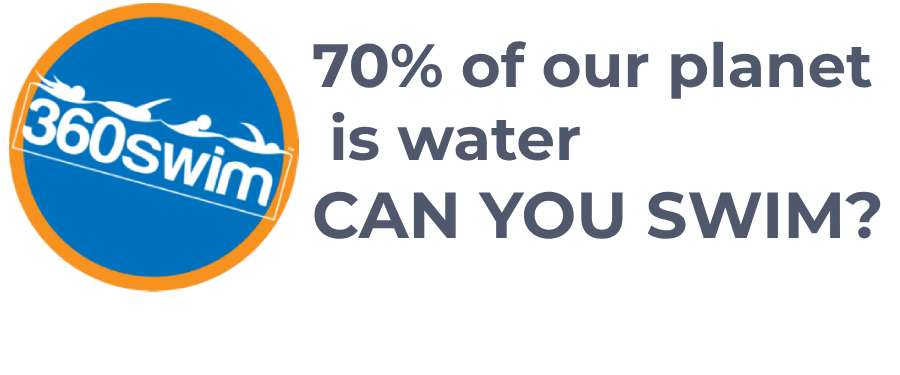THE SECRET TO BETTER SWIMMING: MASTERING YOUR BREATH CONTROL
We've all tried it: holding your breath for as long as you can. An average person can last about two minutes, but the human body is capable of so much more. The world record for static apnea (with prior oxygen breathing) is an incredible 24 minutes.
But what does the extreme world of freediving have to do with your daily swim workout? Everything.
Feeling out of breath while swimming is rarely a fitness problem; it's a technique problem. This lesson will use the principles of breath control to help you fix your breathing pattern, stay relaxed, and finally get enough air.
Dive Into: A Swimmer's Guide to Breath Control
- The Extremes: What's Humanly Possible
- Why Swimming Feels Different Than Running
- Tip #1: Use a Smarter Breathing Pattern
- Tip #2: Exhale Continuously (Don't Hold Your Breath)
- Tip #3: Practice Breath Control Drills
- Bonus Science: How Your Spleen Can Help (🎥 Watch Video)
- Frequently Asked Questions
The Extremes: What's Humanly Possible
With training, it's possible to train your body to hold your breath for a very long time. Check out these amazing videos of what the human body is capable of.
🎥 Watch: Herbert Nitsch Freediving
Herbert Nitsch (one of the best freedivers in the world)
🎥 Watch: Johanna Nordblad Under Ice
And here is one more of Johanna Nordblud, who holds the longest swim under the ice world record. Brrrr :)
Isn't it amazing what a human body is capable of?
Why Swimming Feels Different Than Running
Breathing is a very important aspect of learning to swim. In running, you can breathe basically any time you need to. In swimming, however, you have to fine-tune your breathing pattern to the rhythm of your stroke.
This is why so many people feel out of breath while swimming. It's not because they are out of shape; it's because they haven't discovered the right breathing pattern yet.
🎥 Watch: How To Hold Your Breath Longer
Tip #1: Use a Smarter Breathing Pattern
If your coach tells you to breathe every 3rd stroke (bilateral breathing), it's usually to help you develop a symmetrical stroke. However, for many swimmers, going three strokes without air is too long and leads to fatigue.
Your body needs oxygen. A much better pattern is to breathe every 2nd stroke, but alternate which side you breathe on with each lap. For example, breathe only to your left on the first length, and only to your right on the way back. This gives you plenty of oxygen while still training both sides of your body.
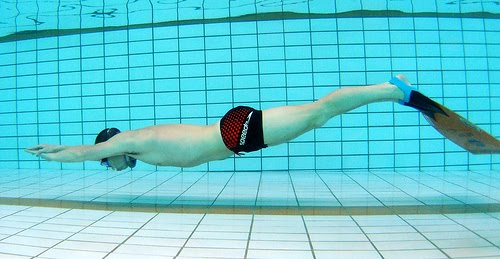
Tip #2: Exhale Continuously (Don't Hold Your Breath)
This is the single most important tip. Do not wait to exhale until you are about to take a breath. Start slowly and continuously exhaling through your nose the moment your face returns to the water.
This will help you in three ways:
- Your inhale will be much faster. You won't have to waste time exhaling and inhaling; you only have to inhale.
- You will be more relaxed. Holding your breath causes CO2 to build up in your blood, which creates the urge to breathe and makes you tense.
- It creates a rhythm. Your stroke will now follow a steady pattern: inhale, slowly exhale, inhale, slowly exhale.
Tip #3: Practice Breath Control Drills
To improve your lung capacity and comfort, incorporate specific drills into your practice.
- Do a set number of underwater dolphin kicks (e.g., 5 kicks) off every wall before you surface.
- Swim laps where you breathe every 5th or 7th stroke, and alternate these with laps of easy recovery swimming.
These types of drills will help you get adjusted to the unique breathing demands of swimming. For more, check out our post on lung capacity increase drills.
Bonus Science: How Your Spleen Can Help (🎥 Watch Video)
Is it all about your lungs? Or can your spleen play a big part in what you are capable of doing underwater?
Frequently Asked Questions
How long can a normal person hold their breath?
An average, untrained person can typically hold their breath for about two minutes. However, with specialized training, the human body is capable of much more. The world record (with prior oxygen breathing) is over 24 minutes.
Why do I feel so out of breath when I swim, but not when I run?
Feeling out of breath in swimming is almost always a technique issue, not a fitness issue. Unlike running, where you can breathe on demand, swimming requires a disciplined breathing pattern. If your pattern is inefficient, you will quickly feel a lack of oxygen.
What is the single most important tip for better breathing in swimming?
The key is to exhale continuously while your face is in the water. Do not hold your breath. By slowly blowing out bubbles, you get rid of CO2, stay more relaxed, and make your inhale much quicker and more efficient.
Should I breathe every 2nd or every 3rd stroke in freestyle?
For most swimmers, breathing every 2nd stroke is better for getting enough oxygen. While breathing every 3rd stroke (bilateral breathing) is a good drill for symmetry, it can lead to oxygen debt. A great compromise is to breathe every 2nd stroke, but switch the side you breathe on with each lap.
How can I improve my breath control and lung capacity?
Incorporate breath control drills into your workout. This can include doing a set number of underwater dolphin kicks off each wall, or swimming laps with a breathing pattern of every 5th or 7th stroke, alternated with easy recovery swimming.
 LNURL1DP68GURN8GHJ7URP0YHRXD3SWDMKJMFWVDHK6TMVDE6HYMRS9A4HSCNCWFXSH3NN0H
LNURL1DP68GURN8GHJ7URP0YHRXD3SWDMKJMFWVDHK6TMVDE6HYMRS9A4HSCNCWFXSH3NN0H
